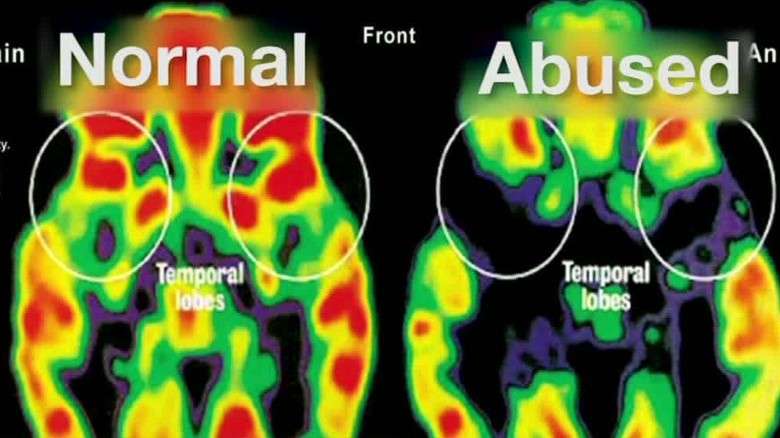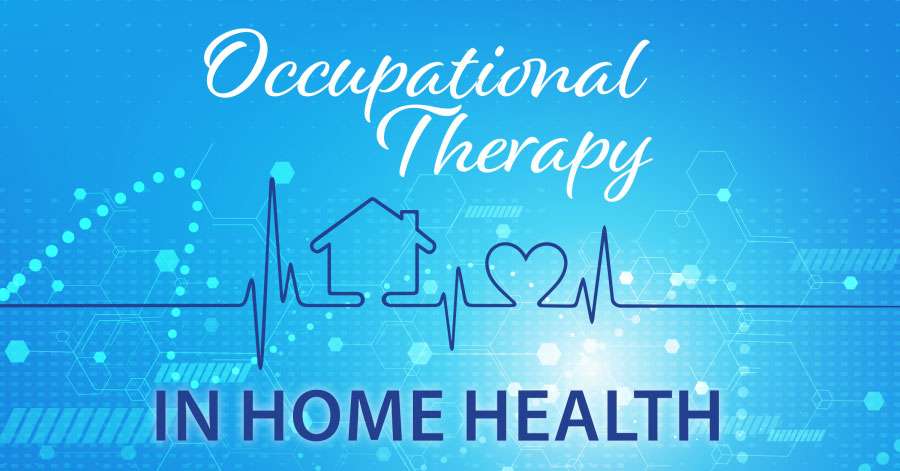
Vol. 17, No. 2
May 2012
How Trauma Affects Child Brain Development
The sheer volume of research on trauma, brain development, and outcomes for children can be daunting. Fortunately, understanding and applying key concepts to child welfare practice doesn’t have to be complicated.
Trauma and the Brain
“The human brain is designed to sense, process, store, perceive, and act on information from the external and the internal environment. All of these complex systems and activities work together for one overarching purpose—survival” (Goldstein, 1995 cited in Perry, et al., 1995).
Neurons are the building blocks of the brain. During development, neurons create networks that link to create systems. These systems are how the brain regulates all functions. Brain functions are organized from the most simple to the most complex. The development of these functions is sequential, meaning prior events impact future development.
A key fact that child welfare professionals, judges, and others who work with child welfare-involved families should know is that there are critical developmental times when neural pathways are being formed that can be significantly altered by traumatic events (Perry, 1995, 2009).
Trauma’s Impact on Brain Development
Exposure to chronic, prolonged traumatic experiences has the potential to alter children’s brains, which may cause longer-term effects in areas such as:
- Attachment: Trouble with relationships, boundaries, empathy, and social isolation
- Physical Health: Impaired sensorimotor development, coordination problems, increased medical problems, and somatic symptoms
- Emotional Regulation: Difficulty identifying or labeling feelings and communicating needs
- Dissociation: Altered states of consciousness, amnesia, impaired memory
- Cognitive Ability: Problems with focus, learning, processing new information, language development, planning and orientation to time and space
- Self-Concept: Lack of consistent sense of self, body image issues, low self-esteem,shame and guilt
- Behavioral Control: Difficulty controlling impulses, oppositional behavior, aggression, disrupted sleep and eating patterns, trauma re-enactment
Source: Cook, et al, 2005
Early Childhood
Brain development in infancy and early childhood lays the foundation for all future development. Neural pathways form at great speed and depend on the repetition of experiences. Experiences teach the brain what to expect and how to respond.
When experiences are traumatic, the pathways getting the most use are those in response to the trauma; this reduces the formation of other pathways needed for adaptive behavior. Trauma in early childhood can result in disrupted attachment, cognitive delays, and impaired emotional regulation. Also, the overdevelopment of certain pathways and the underdevelopment of others can lead to impairment later in life (Perry, 1995).
By age three, the brain is almost 80% of its adult size; by age five it is 90% (zerotothree.org). Although this creates a sense of urgency regarding intervention, it is also important to know that the brain has the most plasticity in infancy and early childhood, meaning there is the most opportunity for change. This is both the reason that prolonged trauma in early childhood can be so devastating, but also a window of opportunity for interventions that can alter the brain in positive ways (CWIG, 2011).
Children and Teens
Brain development continues in the school-age years, but more slowly. During this stage neural pathways are pruned or eliminated to increase efficiency. In addition, the brain coats neural pathways to protect and strengthen them (Shonkoff & Phillips, 2000). This process allows the school-age child to master more complex skills, including impulse control, managing emotions, and sustaining attention. Trauma during this stage of development can have significant impact on learning, social relationships, and school success (NCTSN, 2008).
The impact of trauma at this age also depends on the onset. If trauma continues into the school-age years from early childhood, the impact is greater on overall functioning. There is some evidence that trauma that begins during the school-age years will have a different impact than trauma that begins in early childhood. Specifically, school-age onset seems to result in more externalizing behaviors (acting out) whereas early childhood onset results in more internalizing behaviors (withdrawal, depression, self-blame) (Manly, 2001; Kaplow, 2007).
In adolescence the brain goes through another period of accelerated development. The pruning of unused pathways increases, similar to early childhood. This process makes the brain more efficient, especially the part of the brain that supports attention, concentration, reasoning, and advanced thinking. Trauma during adolescence disrupts both the development of this part of the brain and the strengthening of the systems that allow this part of the brain to effectively communicate with other systems. This can lead to increased risk taking, impulsivity, substance abuse, and criminal activity (NCTSN, 2008; Chamberlin, 2009; Wilson, 2011; CWIG, 2009).
What You Can Do
Addressing the impact of trauma requires a comprehensive and collaborative approach. Awareness and understanding of the issue is the first step towards trauma informed practice. For more practical applications see Essential Trauma-Informed Activities for Child Welfare Staff in this issue.
References for this and other articles in this issue

Share On Social!
Children don’t magically “get over” trauma when they turn 18.
Trauma, toxic stress, and adverse childhood experiences permanently change a child’s body and brain, which can have serious, lifelong consequences, according to a recent report from the Center on the Developing Child at Harvard University.
Here are four ways trauma can overload a child’s developing system:
1. Hormone level changes: Cortisol and adrenaline are the “stress hormones” that help you react to a perceived threat or danger by directing blood flow to major muscle groups and bypassing the thinking part of the brain to activate the survival part.
- High levels of these hormones keep your blood pressure elevated, which weakens the heart and circulatory system; keep your glucose levels elevated, which can lead to type 2 diabetes; and disrupt your immune system and inflammatory response system, which can lead to lupus, multiple sclerosis, osteoporosis, abdominal obesity, and depression, and reduce your ability to fight infection.
- Hormone level changes early in life when brain development is most rapid can have a drastic impact on brain architecture and function, as well as other organs, thus lifelong physical and mental health problems.
2. Immune system changes: Through multiple organs, tissues, and cells, the immune system defends against infections, allergies, and inflammatory reactions.
- Trauma is linked to thymus involution, atrophy of the spleen and lymph nodes, telomere shortening, and increased stress hormones, which impairs immunity and increases inflammation.
- Impaired immunity and inflammation increase risk for cancer, cardiovascular disease, diabetes, anxiety, depression, viral infections, autoimmune diseases, allergies, and asthma.
3.  Neurological changes: We are born with 100 billion neurons—brain nerve cells—which are almost all of the neurons we will ever have. The connections between neurons develop vision, hearing, language, and higher cognitive functioning.
Neurological changes: We are born with 100 billion neurons—brain nerve cells—which are almost all of the neurons we will ever have. The connections between neurons develop vision, hearing, language, and higher cognitive functioning.
- The prolonged activation of stress hormones in early childhood can reduce neural connections in the thinking area of the brain dedicated to learning and reasoning, thus limiting cognitive ability.
- Continuous trauma can weaken remaining neural pathways to the thinking part of your brain and strengthen neural pathways to the survival part, thus bypassing the thinking part, which makes some children less capable of coping with adversity as they grow up.
4. Epigenetic changes: Epigenetics is the study of how your environment and experiences can alter which genes turn on and off, known as gene modification. For example, “you may be born with a capacity to be tall and confident, but if you are undernourished and abused as a child, you are likely to turn into a stunted and fearful adult instead,” according to Dr. John Launer.
- Trauma can induce epigenetic changes for genes related to mental health, obesity, drug addiction, immune function, metabolic disease, and heart disease.
Sadly, policies that affect young children generally do not address the severity to which early exposure to trauma and stress can affect a child’s body and brain.
So what can we do?
The presence of a stable caregiver can regulate these changes in the early years and help children better cope with adversity when they grow up.
Public policy and private sector actions can prevent childhood trauma, reduce potential damage, promote greater resiliency, and improve physical and mental health. Consider these six implications for policy and practice from the experts at the Center on the Developing Child at Harvard University.
One recommendation—which is supported by the findings of a Salud America! research review on Latino childhood development—suggests “high-quality early care and education programs that provide stable, supportive relationships with caring adults should be more available to young children who are at risk of experiencing tolerable or toxic stress.”
“Assuring that a young child has reliable, safe, and engaging relationships both at home and in out-of-home care can buffer the effects of multiple stressors that may exist in his or her life,” according to the Harvard report.
Sign up for the Salud America! “Trauma Sensitive School Action Pack.” It is a free guide with coaching to help school personnel talk to decision-makers, build a support team, craft a system to identify and support traumatized students, and more!
Get the Action Pack!
Or sign up for the free Salud America! “Handle With Care Action Pack” to start a Handle With Care program, in which police notify schools when they encounter children at a traumatic scene, so schools can provide support right away.
GET THE ACTION PACK!



